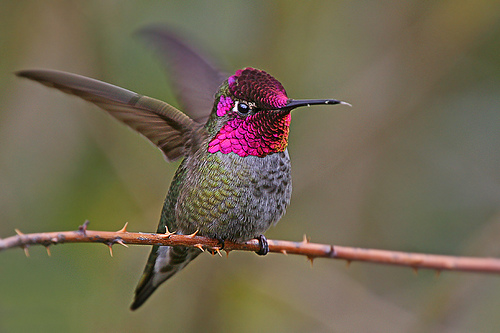
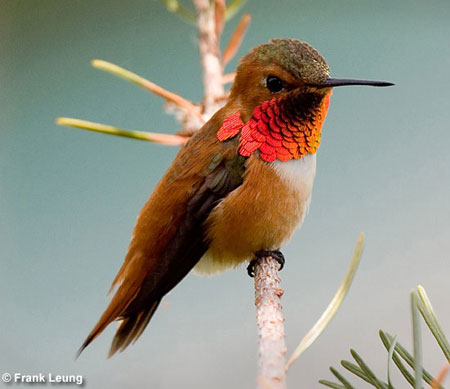

Humming Bird
“Here is a tiny nest not much larger than a big thimble. It is covered with little patches of likened that make it look at first sight like a part of the branch to which it is fastened with the threads of a spider's web.
If you take a peek inside, you will see nestling in the soft cotton that lines the nest, some wee fledglings about the size of the Bluebottle fly. These came from tiny eggs some the larger than a pea.
But you are wondering what very small bird can have built so tiny and elegant a nest. If we stand a little distance from the nest so as not to alarm the little mother, we shall be able to see her when she returns.
Here she comes; but she is so tiny, and darts so quickly through the air, that we should hardly see her if it were not for her brilliant plumage. This makes her look like "a winged jewel," a flying gem, "glowing with all the colours of the rainbow, or the glories of the setting sun." She is not much larger than a bumble-bee, and I expect from her size, beauty, and the sound made by the rapid motion of her wings, you have recognised the beautiful little Humming bird, smallest of all the feathered tribe.
This little mother does not fly straight to her nest, for she wishes to keep it secret. She rises high in the air, and then suddenly darts like a flash of lightning down among the branches as quicker than the eye can follow her, and is quietly feeding her babies with the honey and insects she has been gathering for them, while if we did not know just where the nest was, we should be wondering which way she had gone.
The most brilliant of all the kinds of Humming birds is called the Fiery Topaz, because of its glittering scarlet and crimson colours. Another is the Ruby throated Hummingbird bird, because the breast-feathers which gleamed like burnished metal, glow with tints of ruby and orange. These birds are found mostly in South America.”
May 10, 1900 EJW, PTUK 298

A HUMMING-BIRD'S NEST.
RECENTLY a humming-bird's nest was
found by some persons who had sufficient
natural curiosity to overcome their com-
passion, and who captured the nest, two
young birds, and the old one, took them
home and had them stuffed. They are to
be sent to a museum of natural curiosities
in London. The nest is built on a little
twig, and is scarcely the size of half an En-
glish walnut. Both nest and twig are cov-
ered with little patches of lichen, until it is
almost impossible to tell one from the
other, and the nest looks like a kind of
natural excrescence on the twig. The
nest is pliable, like a tiny cup of velvet,
and the inside is lined with a white sub-
stance, as rich and soft as white silk. The
little birds are about the size of bumble,
bees, very pretty, and they sit on a lit
tie perch just outside the nest, with open
bills, while the old bird hovers over them
to feed them.
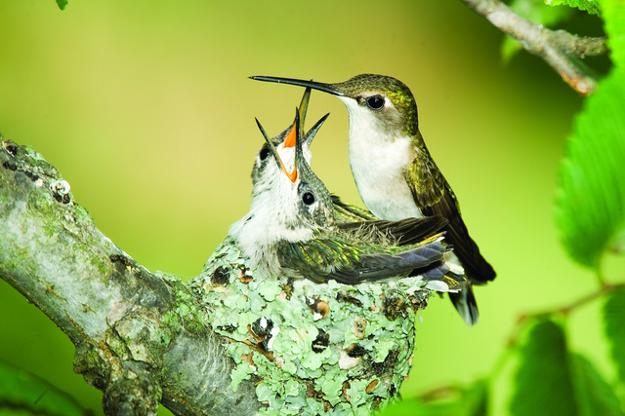
Albino Humming Bird
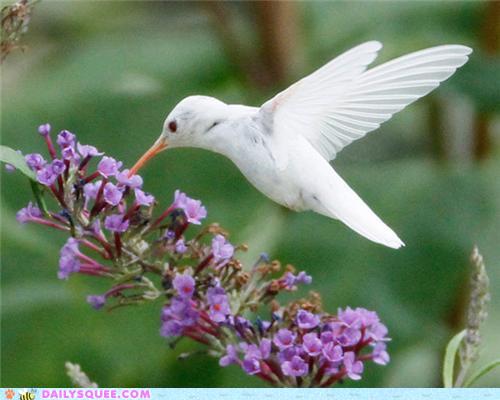
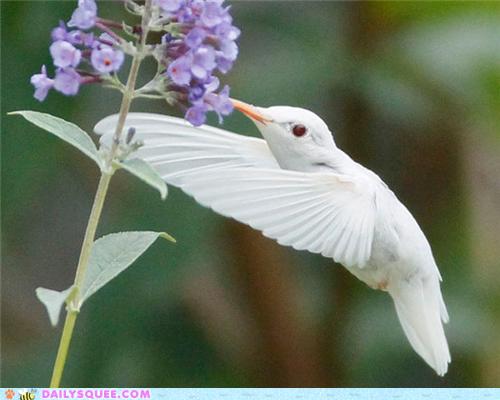
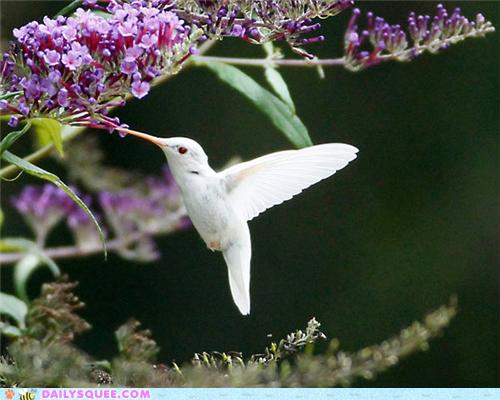
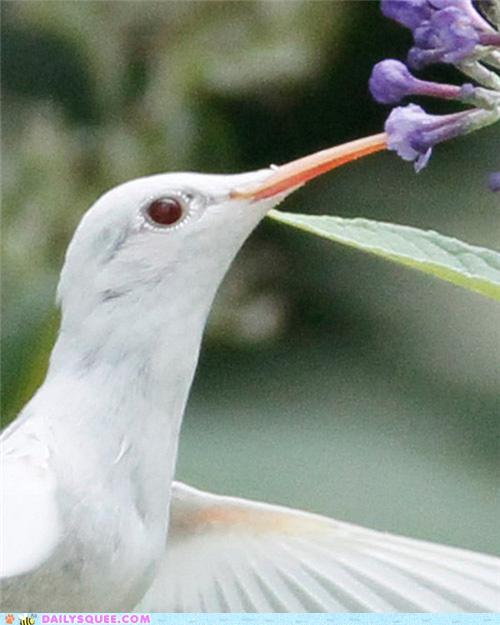
THE HUMMING-BIRD.
THE smallest humming-birds are about the size of bumble-bees; they derive their name from the sound they produce by the rapid motion of their wings. The plumage is composed of the most brilliant colors. The wings are very strong, so they can fly both long and swiftly; the breast-bone is large, and the feathers are as close as fishes' scales. The legs and feet are small and feeble, for they only settle on a twig to dress their plumage and to arrange the moss and down of their nests.
Although blossoms of every kind attract the humming-bird, yet tubular flowers are its greatest favorites, because of the insects which crowd the recesses of the blossom to feed upon its sweets. Arriving at a thicket of them, the little creature suspends its body on the wing so steadily that its pinions become almost invisible. Its only note is a single chirp not louder than that of a cricket or grasshopper.
The nest of the humming-bird is composed of an outer layer of moss glued on with the saliva of the bird, thus making it firm and keeping out the damp. Within this are matted layers of the wings of certain flying seeds; and, lastly, it is lined with down from the stalks of ferns, etc.
When viewed from below, the nest appears to be a mere mossy knot upon the branch of the tree. The eggs are two in number, and are of equal thickness at both ends.
HUMMING BIRD'S UMBRELLA.
In front of a window where I worked last summer was a butternut tree. A humming bird built her nest on a limb that grew near the window, and we had an opportunity to watch her closely, as we could look right into the nest from the window.
One day there was a very heavy shower coming up, and we thought we would see if she covered her young during the storm; but when the first drops fell, she came and took in her bill one of two or three large leaves growing close to the nest, and laid it over so it completely covered the nest; then she flew away. On looking at the leaf we found a hole in it, and in the side of the nest was a small stick that the leaf was fastened to or hooked on. After the storm was over, the old bird came back and unhooked the leaf, and the nest was perfectly dry.
H. A., in American Sportsman.